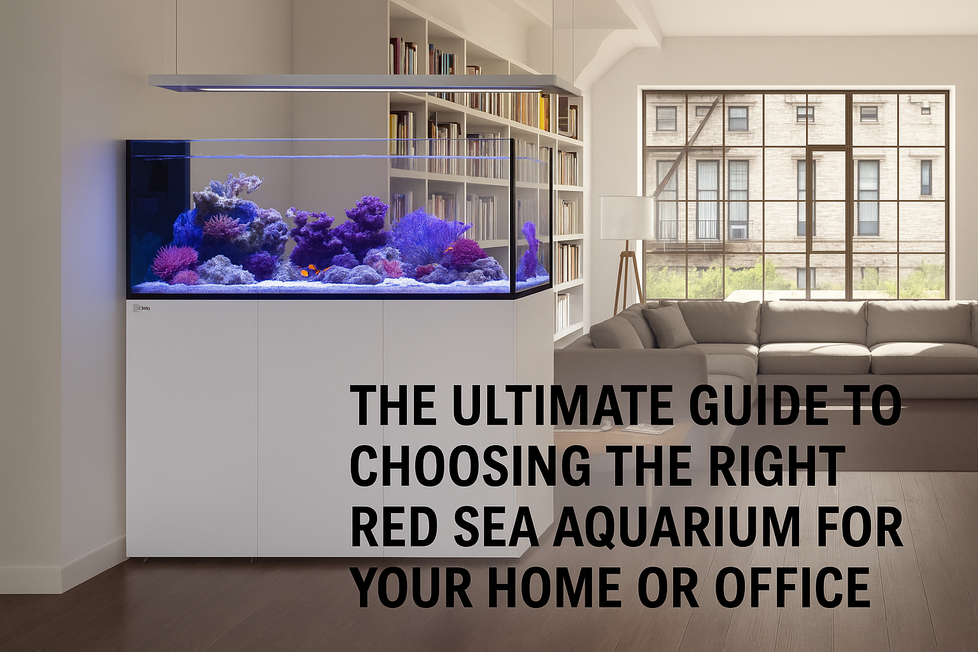Aquariums can be a beautiful and soothing addition to any home, but they also come with their own set of operational costs, including electricity usage. Understanding how much electricity an aquarium uses is essential for budgeting and energy conservation. In this blog post, we will explore the factors that influence an aquarium's electricity consumption and provide tips on how to estimate and reduce your aquarium's energy use.
Factors Affecting Aquarium Electricity Usage
Several factors influence the amount of electricity an aquarium consumes. These include the size of the tank, the type of equipment used, and the species of fish and plants kept in the aquarium.
1. Tank Size
The size of your aquarium is one of the primary factors affecting electricity usage. Larger tanks require more equipment and energy to maintain stable conditions. For example, a 10-gallon tank will consume significantly less electricity than a 100-gallon tank.
2. Equipment
The type and number of equipment used in your aquarium also play a crucial role. Common equipment includes heaters, filters, lighting, air pumps, and protein skimmers. Each of these devices consumes electricity, and their combined usage can add up.
- Heaters: Essential for maintaining a stable water temperature, especially in tropical aquariums. The power consumption of heaters varies depending on their wattage and the ambient room temperature. Explore energy-efficient aquarium heaters at Charterhouse Aquatics.
- Filters: Necessary for keeping the water clean and clear. Filters run continuously and come in various power ratings. Check out our range of aquarium filters.
- Lighting: Crucial for the health of plants and corals. LED lights are energy-efficient options compared to traditional fluorescent or incandescent bulbs. Browse through our selection of aquarium lighting.
- Air Pumps: Provide oxygenation and water movement. They generally have low power consumption. Find reliable air pumps here.
- Protein Skimmers: Used in marine aquariums to remove organic waste. Their power usage depends on the model and size. Shop for protein skimmers at Charterhouse Aquatics.
3. Aquarium Inhabitants
The type of fish, plants, and other inhabitants can influence the electricity usage. For instance, tropical fish require heated water, which increases the energy consumption of the heater.
Estimating Aquarium Electricity Usage
To estimate the electricity usage of your aquarium, you need to calculate the power consumption of each piece of equipment. The power usage is typically listed in watts (W) on the equipment label.
Here’s a step-by-step guide to estimate your aquarium's electricity usage:
- List All Equipment: Make a list of all electrical devices used in your aquarium.
- Note Wattage: Find the wattage of each device. This information is usually found on the device or in the user manual.
- Calculate Daily Usage: Multiply the wattage by the number of hours the device runs per day. For example, if a 100W heater runs for 12 hours a day, it uses 1200 watt-hours (Wh) daily.
- Convert to Kilowatt-Hours (kWh): Divide the daily usage by 1000 to convert watt-hours to kilowatt-hours. In the example above, 1200 Wh divided by 1000 equals 1.2 kWh.
- Calculate Monthly Usage: Multiply the daily kWh usage by 30 days. Continuing the example, 1.2 kWh per day multiplied by 30 days equals 36 kWh per month.
Tips to Reduce Aquarium Electricity Usage
Reducing the electricity consumption of your aquarium can save you money and benefit the environment. Here are some tips to help you lower your aquarium's energy usage:
1. Use Energy-Efficient Equipment
Opt for energy-efficient equipment, such as LED lighting and efficient heaters. These devices consume less power while providing the necessary conditions for your aquarium inhabitants. Discover energy-efficient aquarium equipment at Charterhouse Aquatics.
2. Optimize Lighting Schedule
Reduce the lighting hours to the minimum required for plant growth and fish health. Consider using a timer to automate the lighting schedule and prevent unnecessary usage. Find lighting timers here.
3. Maintain Proper Insulation
Ensure your aquarium is well-insulated to reduce the workload on the heater. Using a lid or cover can help retain heat and maintain a stable temperature.
4. Regular Maintenance
Keep your equipment in good condition through regular maintenance. Clean filters and other devices to ensure they operate efficiently and consume less power. Shop for maintenance supplies at Charterhouse Aquatics.
5. Use a Programmable Thermostat
A programmable thermostat can help maintain a consistent temperature, reducing the heater’s workload and saving energy.
6. Monitor and Adjust
Regularly monitor your aquarium’s power consumption using a power meter. Adjust the usage of equipment based on the readings to optimize energy efficiency.
Conclusion
Understanding and managing the electricity usage of your aquarium is essential for both cost savings and environmental responsibility. By considering the factors that affect energy consumption and implementing the tips provided, you can enjoy a beautiful and efficient aquarium. For more information on energy-efficient aquarium equipment, visit Charterhouse Aquatics.


